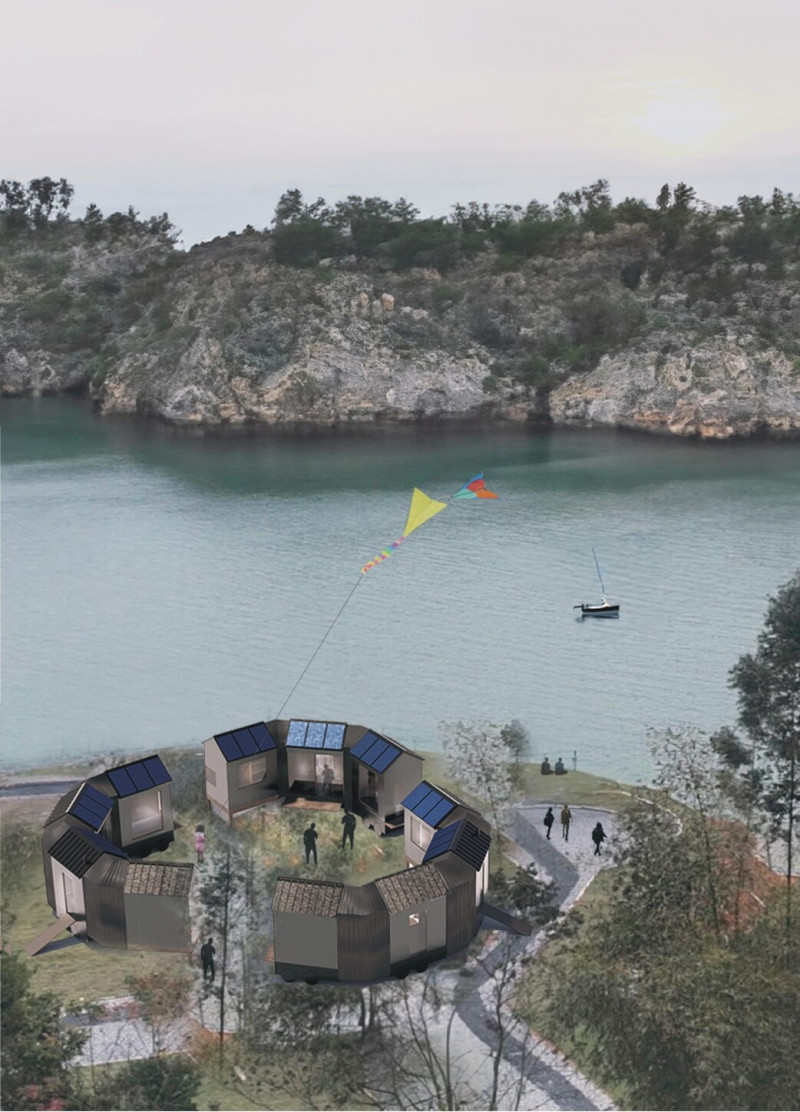5 key facts about this project
The primary function of the project serves as a multi-use facility, designed to accommodate various activities while ensuring versatility and flexibility in its layout. Key elements within the design include open communal spaces, strategically placed windows for natural light, and multipurpose rooms that can adapt to different needs. The overall spatial organization promotes interaction and collaboration among users, aligning with modern architectural trends that focus on community building.
The unique aspect of this project lies in its innovative use of recycled and locally sourced materials. By incorporating these elements, the design not only reduces environmental impact but also highlights the importance of sustainable practices in architecture. Materials such as reclaimed wood, corten steel, and rammed earth are utilized to create a tactile quality that connects the building to its surroundings. This approach further enhances the project's distinctiveness, separating it from numerous conventional designs that tend to rely heavily on mass-produced materials.
In addition, the project integrates biophilic design principles, ensuring a seamless transition between the interior and exterior environments. Roof gardens and green walls are incorporated into the design, serving as natural insulation while promoting biodiversity. The landscaping surrounding the facility complements the architectural language, utilizing native plant species to create an ecosystem that supports local wildlife and enhances aesthetic appeal.
The architectural plans for the project effectively illustrate the meticulous layout, defining the spatial hierarchy and flow throughout the facility. The architectural sections provide insight into the height variations and structural considerations that enhance the user experience and visual dynamics of the project. Further examination of the architectural designs showcases the careful attention to detail that has been implemented in both the exterior and interior elements, underscoring the commitment to quality and longevity.
Overall, the analysis of this architectural project reveals a multifaceted approach that prioritizes not only functionality but also sustainability and connection to the environment. The use of innovative materials and biophilic design strategies distinguishes this project from others, promoting a forward-thinking vision that aligns with current architectural discourse.
For a deeper understanding of the various aspects of this architectural design, including its plans, sections, and design philosophies, readers are encouraged to explore the project presentation for an in-depth review of its features and architectural ideas.


























